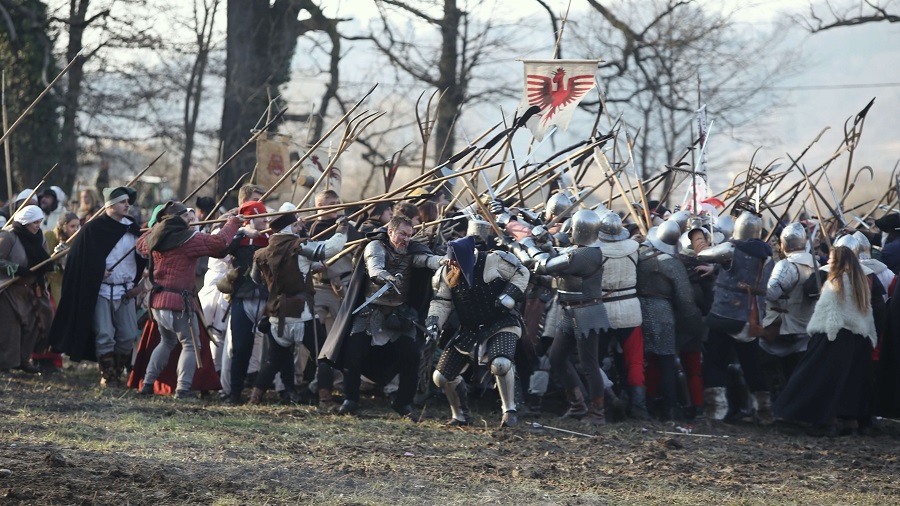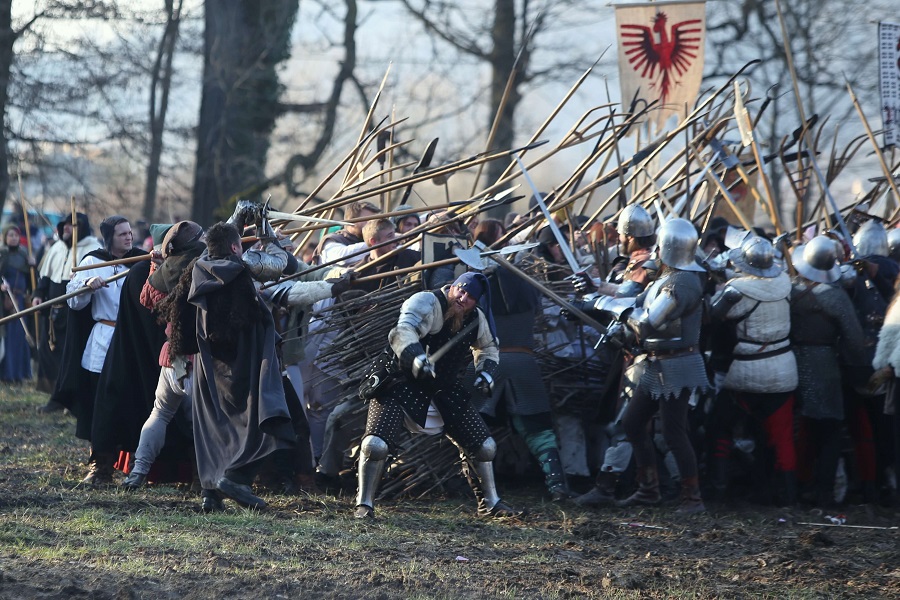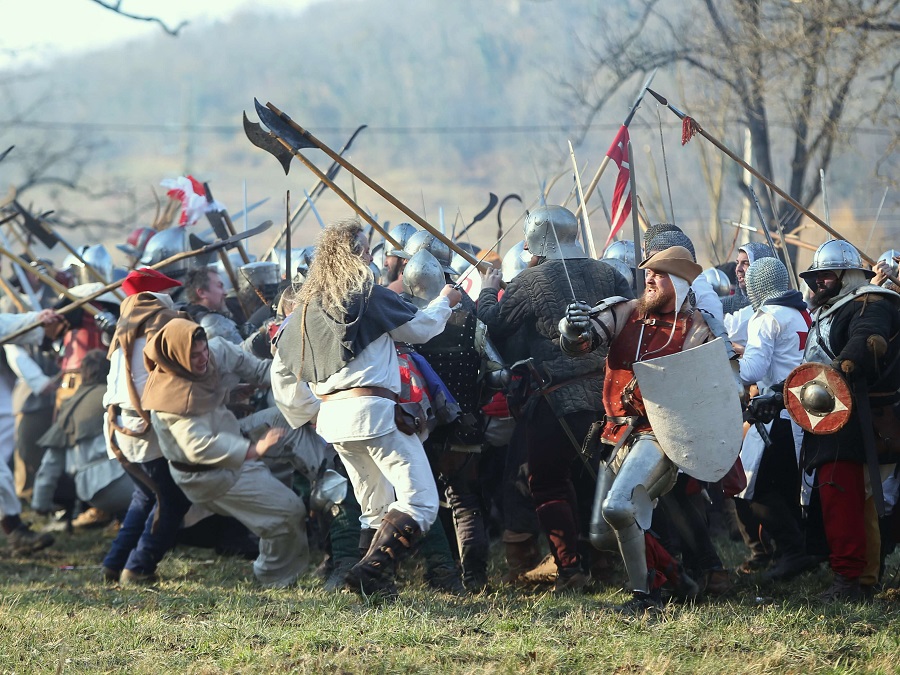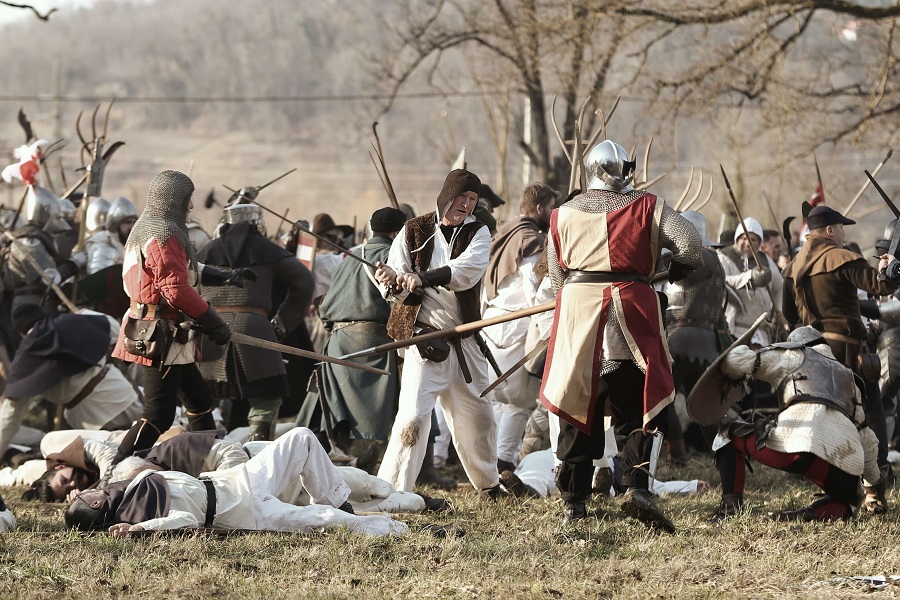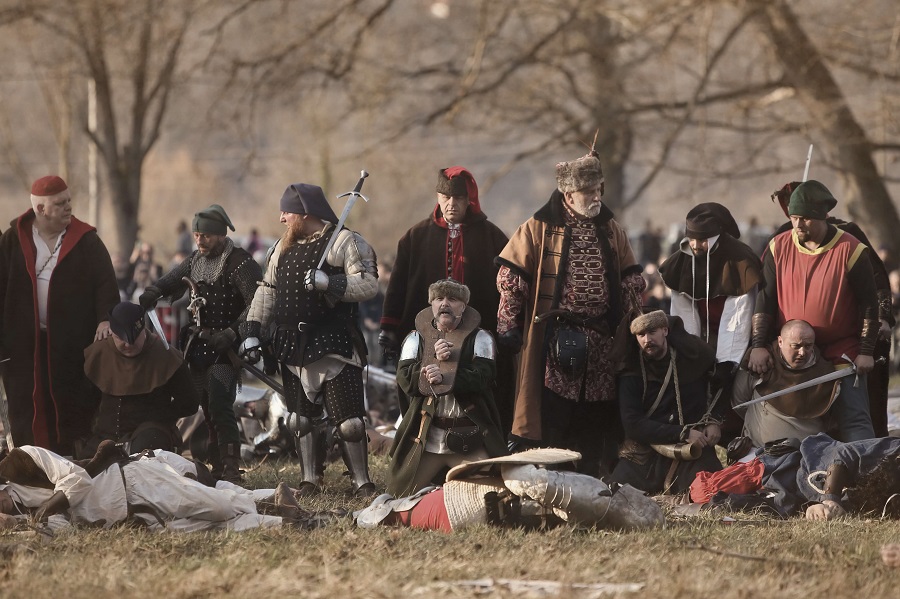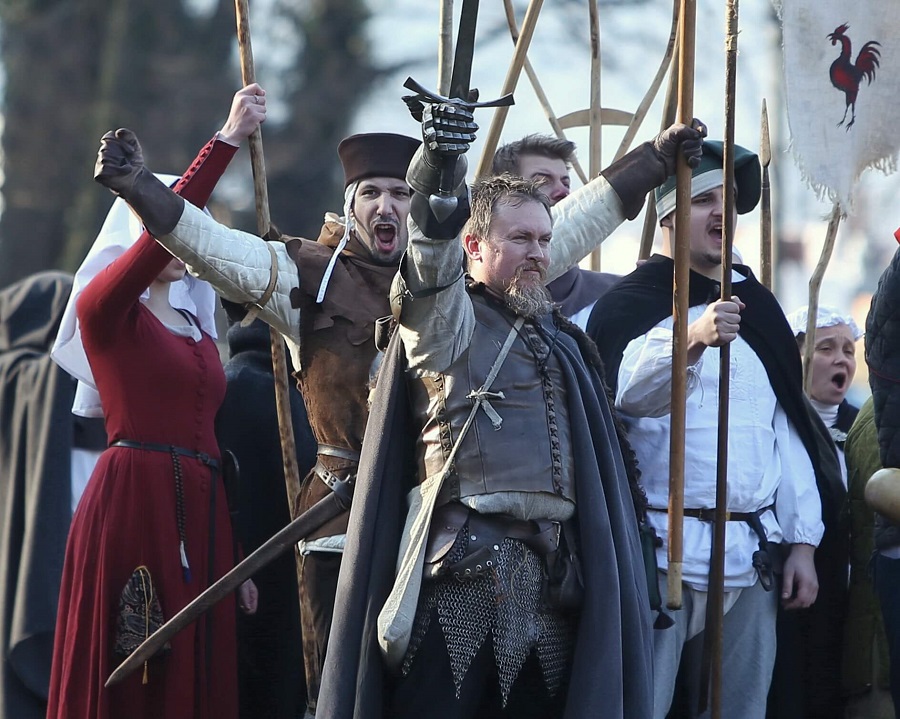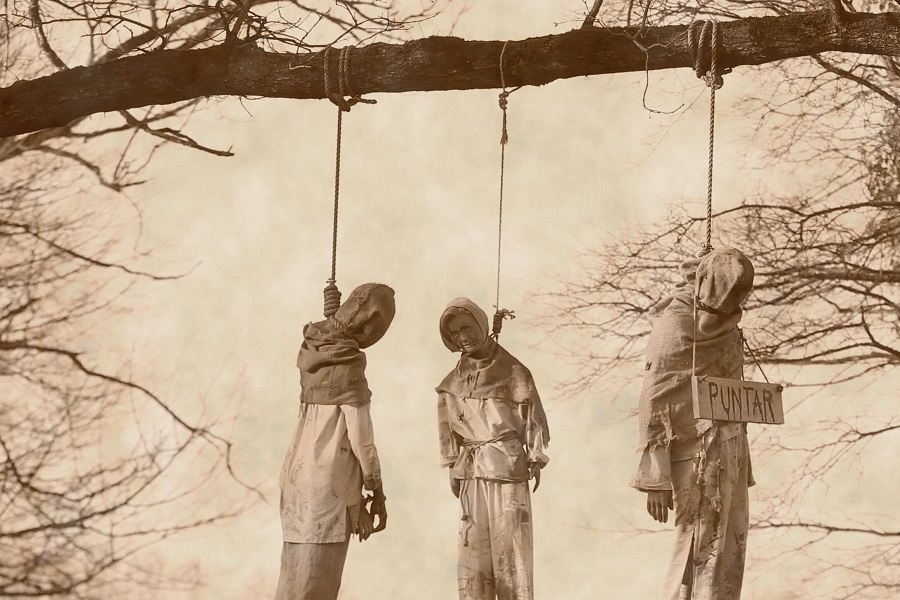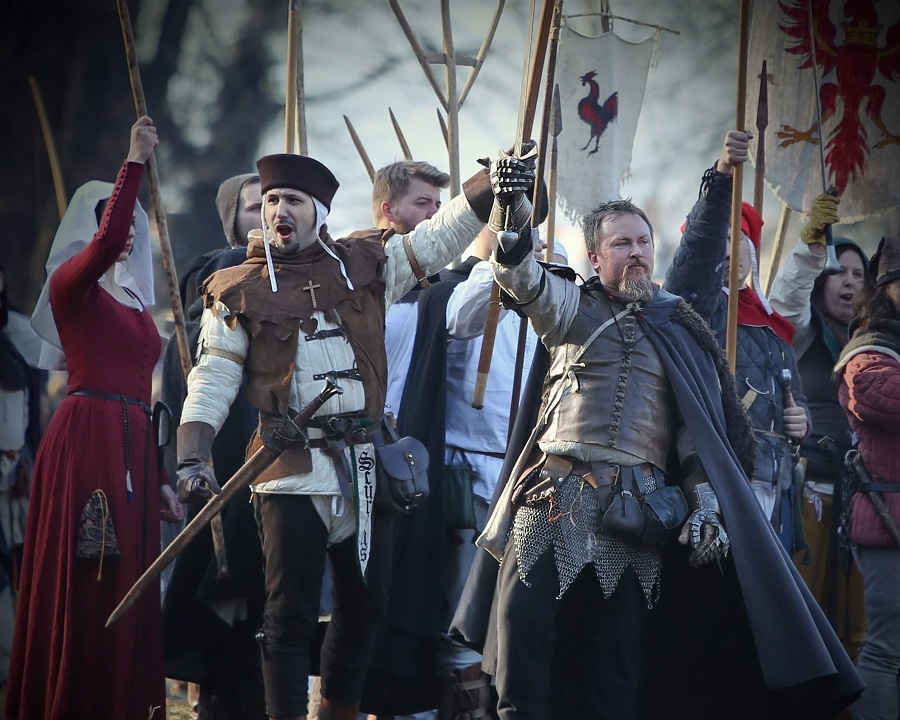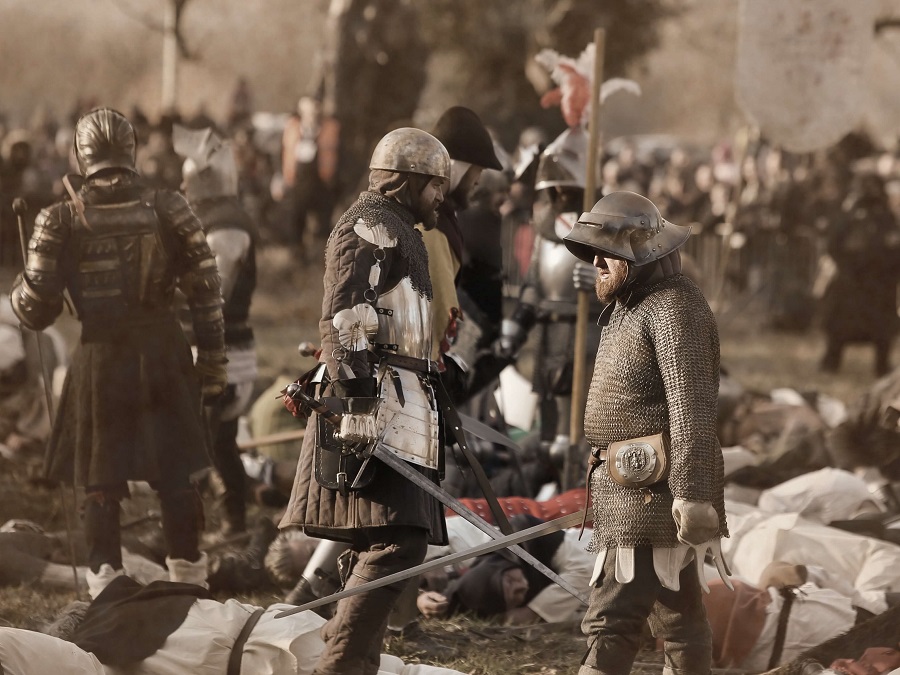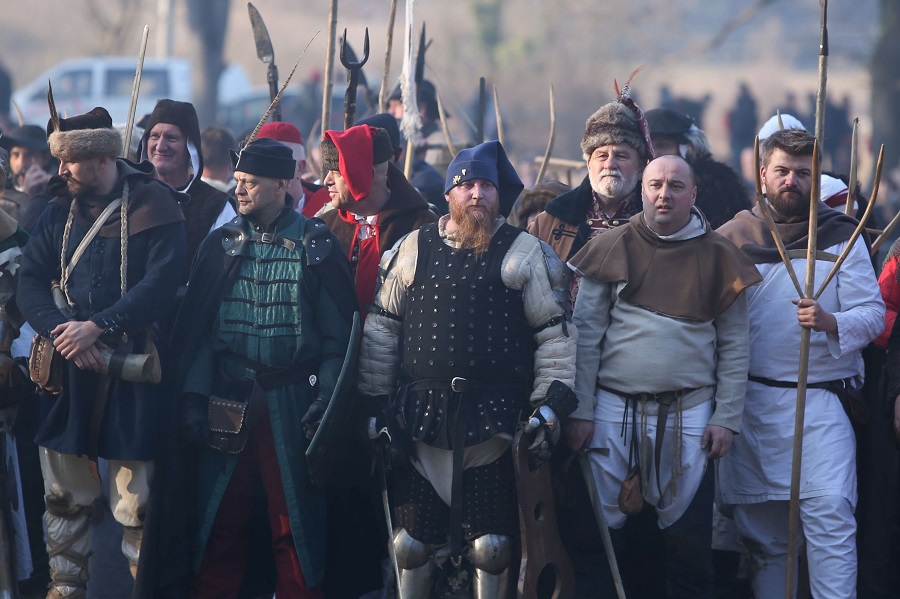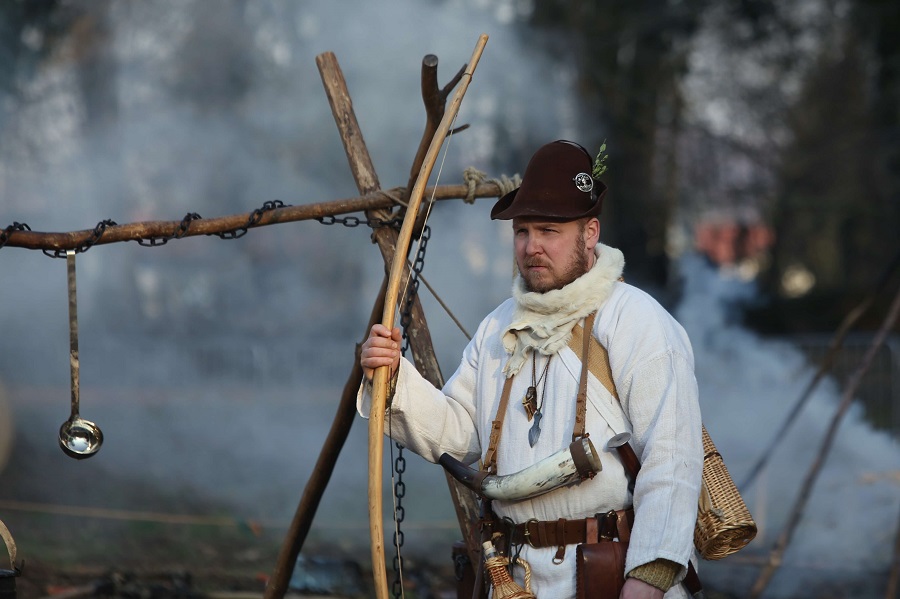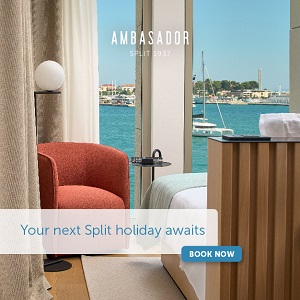Anno Domini 1573: Reenacting the Peasants Revolt in Croatia
February 17, 2020 - It is almost 450 years since the famous Peasants Revolt of 1573, but the memory and tradition live on each year in Donja Stubica.
In the mystery of the misty hills of Zagorje, last weekend, you could hear a strange noise. While one voice screams, "Bunaaa!" (The Revolt), hundreds of others reply, "Trajeee!" (lasts). All of that followed by the rattle of weapons. The place: Donja Stubica, Hrvatsko Zagorje. Year: 1573. Why does it matter? Croatians took the courage to confront the authorities.
On the night of January 27-28, 1573, the famous Peasant Revolt led by Matija Gubec began with an attack on Cesargrad. Reasons for the rebellion were multiple, with the chief increase in giving and terror by royalty. Among the most famous is the violence of the pillar owner Franjo Tahy, especially against peasant women. His four sons also joined him in inhumane actions against his serfs, so the peasants' resistance to the Tahi estate began as early as 1571. The farmers refused to return under Tahi's rule and start to get serious. They formed a kind of peasant government, headed by Gubec, whom they called a bey.
After complaining in vain to the king about the atrocities of the nobles, the villagers stopped paying unreasonable taxes in protest. Subsequently, Tahy sent in his armed mercenaries, but armed villagers readily welcomed them. Due to this resistance, the Croatian Parliament, headed by Ban Juraj Draškovic, declared the peasants' traitors to their homeland.
The news of the Zagreb conviction vigorously shook the entire peasantry in Croatia and Slovenia. They began heavily arming themselves, and the peasant revolt spread with increasing speed, and the serfs in these areas began to cancel obedience to their masters. A war plan was also drawn up, according to which peasants gathered around Matija Gubec, and Ivan Pasanac were to remain in Donja Stubica (where the main focal point of the rebellion was) as part of an army that would defend the area.
Ilija Gregorić led the peasants from Cesargrad, who were the originators of the revolt. Soon the rebellion spread throughout Carniola and Styria, and units of serfs fought bravely and conquered more and more land, including the area between Brežice and Mokrice. Their goals, the abolition of feudalism and the seizure of power by establishing a kind of imperial province in Zagreb, were ever closer.
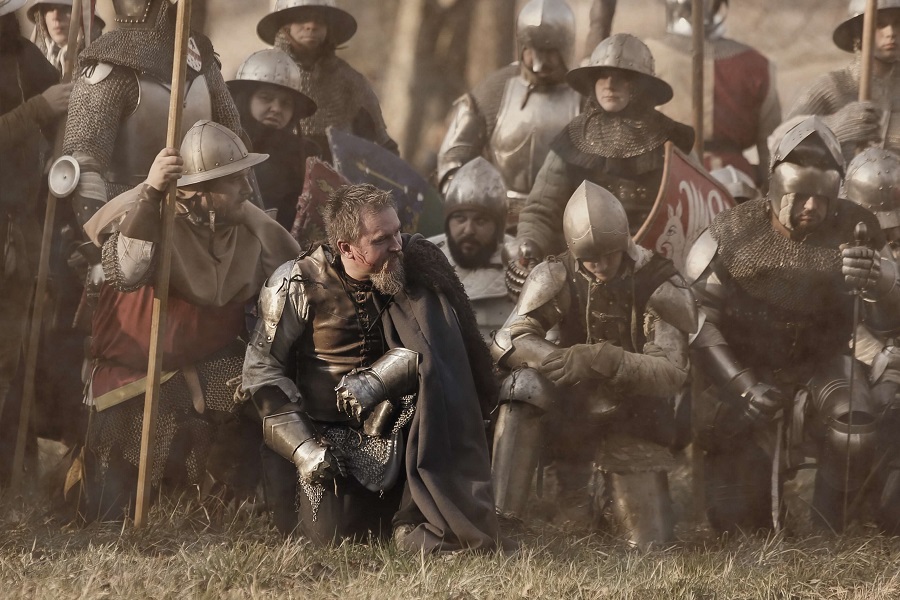
Then there was a breakthrough. Namely, the Žumberak Uskoci, well-armed and experienced soldiers counted by the peasants, after a short hesitation, put themselves on the side of the feudal lords (who richly rewarded them for that). On 5 February 1573, the peasant army experienced its first defeat at Krško, routed by the Uskok troops led by Captain Thurn. In the battles of Kerestinec, Mokrica, and Krško, a large number of peasants were killed, which discouraged them, and their continued resistance in these areas was increasingly weakened. The army sent by the great men was steadily increasing, and it was the beginning of the end of the Croatian-Slovenian peasant revolt.
The decisive battle took place on 9 February 1573 at Stubičke Toplice. The royal army was led by Gašpar Alapić (later Croatian Ban), and when Matija Gubec realized that the royal soldiers were approaching them, he decided to fight to the end. At first, the peasants fought bravely, but numerical superiority and weaponry were certainly not on their side, and defeat was imminent. Mogaić was killed on the battlefield as were many other peasants, and many were captured.
Matija Gubec and Ivan Pasanec were brought to Zagreb and brutally executed on St Mark's Square on 15 February, 1573. According to legend, Gubec had to wear a blazing crown on his head, after which the Hungarian landlord Morencz Bahiczy cut Matija into several pieces.
On a cold winter's day every year for the past 12 years, hundreds of reenactments take place on the field of Donja Stubica to repeat this piece of history. The main organizers are Družba vitezova Zlatnog Kaleža, while more than 20 medieval groups reconstruct the historical battle. One of them was Knight Order of Saint Nicholas Varaždin, about whom you can read here. Every year there are more and more visitors, so now we are talking about over 20 thousand people. This reenactment event got the "Simply the Best" award for the best historical display and tourist event. The whole event was accompanied by a cultural art program, a fair of old crafts, and the reconstruction of a medieval village with a gastronomic offer from that time. Kids learn about the Peasant Revolt kids in school, we read about it in books, and one Croatian band even sing about it! In case this topic got your attention more than usually, here is the movie Anno Domini 1573.
If you missed it this year, be prepared for the next time, because remember... The Revolt, lasts!
Mali Brijun: Abandoned Buildings Being Renovated for 41.7 Million Kuna
As Barbara Ban/Novac writes on the 17th of February, 2020, the public tender for the selection of the construction works company to be held in Mali Brijun is underway until February the 21st, 2020, and it concerns the renovation of seven ground-floor structures. These are currently abandoned buildings that will be renovated for education and research as part of the EU's New Brijuni Project.
According to the Brijuni National Park public institution, in the bay of Sv. Mikula, where the former military dormitories used to be, there will be a new complex, the purpose of which will be primarily educational and for research purposes. The newly renovated one-storey buildings will be intended for the accommodation of pre-school, school and university groups, non-governmental organisations, artists, scientists, as well as for all those who wish to carry out educational programmes on the island of Mali Brijun, such as nature schools and cultural programmes etc.
The four buildings will be converted into dormitories that will have a total of eighteen hostel-type rooms with eighty beds with bunk beds, ranging in size from one hundred to 180 square metres, with shared or separate bathrooms. Part of one of these buildings will be an information (info) point, while the rest will house a kitchen with a restaurant with about fifty seats, a storage room and a janitor's space. In addition to the new recruitments that will follow the reconstruction, the said activity will contribute to a significant expansion of the Brijuni National Park's offer for excursion tourism as Mali Brijun is currently closed to visitors, except for certain announced groups.
"The planned value of the works and equipment in Mali Brijun comes to a total of 8.5 million kuna, and it is divided into two procurement procedures. The ongoing tender includes construction works, that is, the reconstruction of facilities, worth 7.3 million kuna, followed by a tender for the equipping and the interior design of dormitories and hospitality facilities and an accompanying kitchen, for which 1.2 million kuna are set aside and foreseen. We expect all of the works to be completed in 2021,'' said Masha Mihelic.
The key infrastructure prerequisite for the beginning of reconstruction of these facilities on beautiful Mali Brijun was the renovation/rehabilitation of the old access pier for cargo vessels, which collapsed due to severe storms, which prevented the preparation and implementation of this significant project activity. Work on the reconstruction of that Austro-Hungarian pier is underway and should be completed by late spring.
The island's revitalisation is part of the activities of the New Brijuni Project co-financed under the "Competitiveness and Cohesion 2014-2020" operational programme from the European Regional Development Fund and the Environmental and Energy Efficiency Fund. "Novo ruho Brijuna'' is one of the projects involving national parks and nature parks that has been successfully submitted to the competition of the Ministry of Regional Development and EU Funds, and "Promoting the sustainable use of natural heritage in national parks and nature parks" and has been being actively implemented since back in October 2017.
The total value of the project is set at a maximum of 41.7 million kuna. The total eligible costs of the project are 32.1 million kuna, of which 27.2 million kuna has been awarded from the European Regional Development Fund, ie 85 percent of the total eligible costs. The remaining eligible costs were co-financed with funds from the Environmental Protection and Energy Efficiency Fund in the amount of 3.2 million kuna, while the funds in the amount of 1.6 million kuna were co-financed by Brijuni National Park's public institution.
In order to increase the mobility and availability of new facilities on the island of Mali Brijun, a new passenger ship with a capacity for 150 passengers is under construction at Tehnomont Shipyard Pula, whose handover and launch is expected in mid-2021. With more frequent shipping to the islands, the new shallow-draft catamaran that will be able to dock at Mali Brijun will enable the realisation of a completely new offer for visitors.
This is also in line with the aforementioned project, the overall aim of which is to improve the management of Brijuni National Park with the principles of the sustainable use of natural heritage with the aim of socio-economic development of the local community through the development of visitor infrastructure and attractive tourist facilities, thus raising the level of visitors' knowledge about the importance of natural heritage. Additionally, with the aim of presenting the geotourism potential of Mali Brijun, equipment for a tour of the educational footpath called Brijuni Stone Stories will also be purchased.
The other most significant, already realised, activity of the entire project for Brijuni is the procurement and establishment of a new info point in Veliki Brijun with an interactive screen presenting all of Brijuni's attractions and the procurement of two homologated tourist trains that allow sightseeing of the island for people in wheelchairs.
The New Brijuni Project includes various promotional and marketing activities, such as market research and analysis, branding strategy, media advertising, the production of promotional videos, brochures, leaflets, multilingual guides etc.
Croatian Association for Hydrogen Energy Organises Hydrogen Week
ZAGREB, February 17, 2020 - The recently founded Croatian Association for Hydrogen Energy is organising Hydrogen Week, which will take place as part of an informal meeting of the EU environment and energy council from 26 to 28 April in Split and on 30 April 2020 in Zagreb, the Croatian Association for Hydrogen Energy has reported.
The Croatian Association for Hydrogen Energy is a member of Hydrogen Europe, which makes it Croatia's official representative in that leading European association for hydrogen. One of the first projects of the Croatian Association is Hydrogen Week, which is being organised under the auspices of the Ministry of Environment and Energy.
The Association for Hydrogen Energy was founded as an industrial-academic partnership with the aim of promoting the development of the Croatian economy in the field of hydrogen technologies, namely the production, storage, distribution and use of hydrogen. The Association will promote hydrogen technologies as key components of an environmentally-friendly and clean industry, as well as of a sustainable economy.
The president of the Croatian Association for Hydrogen Energy is Professor Frano Barbir of the Faculty of electrical and mechanical engineering and naval architecture in Split.
More energy news can be found in the Business section.
Defence Ministry Signs Procurement Agreements with 38 Croatian Companies
ZAGREB, February 17, 2020 - The Ministry of Defence on Monday signed procurement agreements with 38 Croatian companies for military equipment and services valued at about €61 million or about €19 million more than in 2019.
The agreements were signed by Minister Damir Krstičević who underscored that Croatian soldiers are entirely equipped with Croatian products and weapons and their participation in international missions and operations serve as an excellent reference in tenders that Croatia applies for on the global markets.
"These agreements represent a significant contribution to Croatia's economy and show that MORH is not just a consumer but also a generator of development and a promoter of Croatian products," Krstičević said underscoring that this provides local producers security and can assist them in planning annual production capacities.
Krstičević claimed that the ministry does not buy products produced by Croatia's military industry simply "because they are ours" but because of their quality and competitiveness.
"We pride ourselves and commend our coast guard boats produced in Brodosplit. After initial difficulties in building the first prototype, which have now been overcome, this year we are launching the construction of the first in a series of patrol ships," said Krstičević.
The Đuro Đaković company is completing a general overhaul of M-84 tanks. We see potential in that company in the further upgrade of tanks and also in a project to equip the Croatian Army with impressive Bradley armoured vehicles, he said and added that the company has the ministry's support particularly when it comes to innovations and investing in new technology.
He announced that a second coast guard patrol ship will be handed over on the Croatian Navy Day - 18 September next year and another two ships in 2022 while the fifth and last will be in the navy by 2023.
"The Croatian Army and defence industry are closely connected and mutually dependent. There cannot be a strong Croatian Army without a strong local industry and that always has to be our common goal," Minister Krstičević said at the signing ceremony.
More news about Croatian military can be found in the Politics section.
How Croatian Youth Can Change Lives and Shape Minds with Erasmus+ Projects
February 17, 2020 - There are many opportunities for young Croatians to broaden their horizons, which are not being fully utilised. A look at Erasmus +.
Even though Croatia has been part of the European Union for almost seven years, many of its citizens have yet to realize the full potential of all the programs the EU has in store for us. The young are probably familiar with the Erasmus+, which is organized between Universities and which allows them to spend the semester or a year abroad. The problem with many Faculties in Croatia is that it gives very limited options to its students when it comes to subsidizing their subjects, and most of them, in the end, decide not to go. The reason behind it is that they would probably have to redo the year at their home University.
But, there is an option for students with the limited time that would like to experience traveling abroad, exchanging cultural similarities and differences with their peers, and still learn something new and useful. It's called the Erasmus+ project, and it seems to be taking Europe by storm. The same cannot be said for Croatia, though, where there are not as many NGOs that are actively working on connecting the youth with the projects offered.
Let's start with the introduction and explanation of what an Erasmus+ project is. It is part of the larger, Erasmus+ program comprised of various plans related to education, training, youth, and sports. At the beginning of the decade, the European Commission was trying to find the solution to the growing problem of unemployment, particularly among young people. Their way of combating the challenge was to ensure that the young are getting skills that are not only explicitly related to their University education but rather will endure through all the hardships of the future.
One of the hardships Europe dealt with from 2014 onwards was the influx of migrants coming from disadvantaged backgrounds and, by creating this chain of projects, they managed to raise the youth that is more understanding and has a higher sense of belonging to a community no matter how much that community differs from the one they were raised in. Other than that, the goal was to raise the youth willing to fight for what they stand for, and that is courageous enough to participate in society and the creation of democratic Europe actively.
They managed to do it by creating a well-organized education and training system which provided people with skills required by the labour market and the economy of the 21st century, pushing them to play an active role in society and, in the end, achieving personal fulfillment. Its first round started in 2014 and was supposed to end by the end of this year but will instead be extended for another seven years. All the projects were funded from the European Commission budget. The 14.7 million euros were used to pay for the accommodation and food for the participants as well as people in charge of the project, and realization of the project itself. The new round is projected to cost the European Commission more than 3 billion euros.
Fortunately enough, there are groups of people in Croatia that are using their own private time and resources in order to notify the youth of all the projects. One of them is Mateo Papić, co-founder and president of the NGO Institute of Youth Power Croatia, which was established in February of 2018. People that helped start it were Karla Silic, Dea Botica, and Leo Bartolec.
When asked how he came up with the idea of founding a non-government organization whose purpose will be to connect young Croatians with passion for previously mentioned causes and Erasmus+, Mateo was quick to answer.
"I had been on a few projects with the informal youth group from 2016 to 2018, and in the beginning, it was all about fun and getting experience from various people all around Europe. Somewhere around the end of 2017, a friend of mine, Leo, asked me to take the leadership of the informal group, and I took a challenge upon myself. Even though there were some difficulties in the beginning, few people decided to drop out, and in the end, it was all left on my shoulders, near the end of 2018, the NGO really kicked off. The Institut of Youth Power Croatia was born."
In the meantime, Mateo used all of his free time to participate in projects, learn about the Erasmus+ itself and meet a lot of people from all sides of Europe. He used that experience to connect with various other organizations, and that is how other members of IYP started participating in projects.
When it comes to explaining why his peers are not following his lead, he says Croatians don't have a mentality of going to projects and then, upon return, promoting it to their friend as something educational. Instead, most Croatians are focused on the destination and the fact that Erasmus+ projects are also famous for their parties.
"One of the key reasons I was eager to start working on developing the organization even further is the fact that it gives a fantastic platform for all the participants. One of the policies we have in our organization is that every participant has to write an honest review of the project. Then we promote it through our social media, and more people see how amazing it is to participate. "
Another problem is the lack of understanding from high-school and college professors when it comes to absences students collect during the time of the project. Once teachers become more lenient, and students realize that it is better to spend an absence on the project than on a coffee with a friend, the Erasmus+ projects will see more Croatians actively participating.
"Last year alone, we send over 150 people on projects and seminars. Seminars are great for people who want to write their own project and create an even more significant impact on the European community."
In the end, Mateo talked about some of his goals and how he sees himself in the next few years.
"There have been some rumors which suggest organizers of the NGOs might be getting paid in the next phase, starting from 2021. That would give us an amazing head start and could be helpful when trying to construct some projects for the participants to come to us. Just last week we submitted an application for five projects with our partners and friends from Bosnia and Herzegovina, Armenia and Bulgaria. We really hope some of them might get selected. That would put our organization on the map with other successful organizations in Europe. Our motto is always striving for the best and highest goals and not giving up until we get there. This can be achieved only happen if every single one of us thinks for themselves and decides what they deem necessary enough to put all the effort into."
Whether it is due to meeting new people from different parts of Europe and, thus, often entirely new cultures, working on oneself and contemporary skills, or just free traveling, one thing is for sure, those that go and experience an Erasmus+ projects, fall in love with it entirely.
The motto of the Erasmus+ is changing lives and shaping minds. It perfectly illustrates all the benefits of participating. If you want to join and learn about yourself as well as about different European cultures and also have fun on the way, check the new webpage Institut of Youth Power Croatia and change your life.
And if you want to know more about the Erasmus+ guidelines and program guide, you can check out their official webpage.
Underwater Heritage of Split-Dalmatia County: 28 Sites, 3 Museums Presented in New Guide
February 17, 2020 - The first tourist guide for Croatia’s underwater cultural heritage has been presented in Split-Dalmatia County.
HRTurizam reports that "Underwater Heritage of Split-Dalmatia County” is the name of a new tourist guide presented by County prefect Blaženko Boban, Head of the Department of Tourism and Maritime Affairs Stipe Čogelj, and Split-Dalmatia County Tourist Board director Josko Stella. The new guide was also presented by archaeologists Saša Denegri and Silva Kukoč, and Tea Katunarić Kirjakov, archeologist and art historian at the Art Academy of the University of Split.
The project, funded by Split-Dalmatia County in the framework of the Call for Proposals for Financing Projects from the Program of Development, Protection and Valorisation of Maritime Heritage in Split-Dalmatia County in 2019, is the first of its kind in Croatia
There are more than 200 underwater archeological sites in the marine area of Split-Dalmatia County, ranging from single isolated finds of small artifacts to preserved shipwrecks carrying amphora loads and wrecks from World War II. The goal of developing a cultural and tourist guide for the underwater heritage of Split-Dalmatia County is to promote underwater archeological sites to get a complete picture of the richness, diversity and importance of the underwater world, and further develop archeological and diving tourism in Split-Dalmatia County.
The new cultural and tourist guide presents 28 underwater sites and three museum collections with underwater archeological finds. The guide is designed in such a way that the waters of Split-Dalmatia County are divided into five geographical areas (the waters of Split and the Bay of Kastela, the waters of Brač island, the waters of Hvar island, the waters of Vis and Palagruza islands), and covers the period from prehistory to World War II. All localities are approximately indicated on maps, and different colors indicate different depths of sites.
A separate section also features the Battle of Vis as the most significant naval battle on the Adriatic and the three wrecks that participated in the battle as one of the most significant underwater finds in the Adriatic. The guide represents different types of cultural property from all historical periods, covering the entire waters of the county (ancient remains of architecture and shipwrecks, late medieval shipwrecks, and the remains of modern-day wrecks and planes from World War II). In addition to the historical and geographical information, each site has its depth and accessibility for visitors. The guide is available in Croatian and English.
“With the introduction of this guide, we offer something that should be recognizable, especially to the clientele who will not stand for busy roads and terminals, and their financial potential is exceptional. For this purpose, the underwater heritage of our county stands out as an additional value of our tourist offer. Through the guide presented, almost all the localities of our county are listed, with all the directions, depths, and a breakdown of what is allowed at these locations. In addition to tourism, this guide will serve to protect these beautiful sites. I believe that through the Split-Dalmatia County Tourist Board, tourists who want to see these cultural and tourist values in an organized manner can now become acquainted with them. I also thank the authors of the guide, as well as the county services who have done something extremely valuable and of good quality,” said Boban.
To read more about travel in Croatia, follow TCN's dedicated page.
Croatia Has 4 Diplomats at the EU Dedicated to Space Exploration
February 17, 2020 - The Permanent Representation of Croatia to the European Union has increased the number of staff during the Croatian presidency; one fact regarding space exploration still managed to make the news in Croatia today.
Gordan Duhaček writes for index.hr about four people out of the 150 listed on the Representation website are dedicated to the Exploration and Space. While the English version of the website doesn't offer that piece of information, on the Croatian site you can find the four diplomats listed under the section "Istraživanje i svemir".
Index.hr asked the Representation about the number of the staff working there, especially considering that the Slovenian Representation to the same institution includes around 60 diplomats, while the Austrian is only 30 people strong.
Bruno Lopandić, the spokesperson for the Representation replied that the increase of the number of people working for them is in line with the increase previously seen when other countries started their presidencies. That is, according to Lopandić, what happened to the Exploration and Space staff, as only one person was working on this topic, while with the presidency came the need to increase the number to four. Lopandić also lists that Finland and Austria had 6 diplomats in this department during their presidency, while Romania and Bulgaria had 5.
His answer to the question by index.hr about what those diplomats exactly do in their role is as circumspect and unspecific as you'd expect, but the more interesting fact is about the educational background of those four diplomats. Index.hr claims that all four of them have degrees in humanities and social sciences, and none of them have any experience with any STEM area, such as astronomy. The spokesperson doesn't find that problematic, answering that they needed to have the university diploma to get appointed, that they have experiences in EU projects and that they were additionally educated in meeting management. (But, apparently, not in any space, exploration or research topics).
The statement from the Representation reminds us that their job is, among others, to increase the number of applications to the Horizon2020 program, as well as promote activities related to the outer space and using the technologies developed for the outer space, in order to increase the co-operation between the scientists and the economy.
Let's add to this that Croatia already has a Space Exploration Technology Centre, established in Sisak, very close to villages which still, to this day, don't have electricity.
Zagreb to Host Conference on Anti-Fascism and Fascism
ZAGREB, February 17, 2020 - The SABA RH antifascist alliance in Croatia will organise an international conference on fascism and anti-fascism in the present-day Europe in Zagreb on 20 and 21 February.
Presenting the goals of the conference, the association's leader Franjo Habulin said at a news conference in Zagreb that the event would be part of the efforts to counter the strengthening of extreme right wing politics and more and more aggressive attacks on the values of the anti-fascist struggle, which, he said, were the biggest values of the present-day Europe.
Habulin said that the victory against the fascist regimes in 1945, after they had caused the Second World War, did not mean that fascism had disappeared from the historical scene.
He also pointed out that there were "more refined appearances" of fascism in a great number of European countries.
He criticised Resolution 1481 adopted by the Council of Europe in 2006 which underlined the need for international condemnation of crimes of totalitarian communist regimes as a document that equates fascism and communism. He added that that historical revisionism also originated from that document.
In the resolution 1481/2006 of the Council of Europe Parliamentary Assembly (PACE), issued on 25 January 2006 during its winter session, the Council of Europe "strongly condemns crimes of totalitarian communist regimes". The Parliamentary Assembly refers to its Resolution 1096 (1996) on measures to dismantle the heritage of the former communist totalitarian systems. The paper condemned "the massive human rights violations committed by totalitarian communist regimes". It also "calls on all communist or post-communist parties in its member states which have not yet done so to reassess the history of communism and their own past, clearly distance themselves from the crimes committed by totalitarian communist regimes and condemn them without any ambiguity."
Habulin told the news conference that the rise of neo-fascism was accompanied by the process of degrading and vilifying anti-fascist fighters from the Second World War and their contemporary followers.
The organisers of the Zagreb conference have invited representatives of anti-fascist associations from 25 European countries, including 15 EU member-states.
Some of the guests will be Vilmos Hanti, the head of the International Federation of Resistance Fighters - Association of Anti-Fascists also known by its French initials FIR, as well as Dan-Viggo Bergtun, the president of the World Veterans Federation.
More history info can be found in the Politics section.
Promoting Croatian Tourism Through Film: Spomenka Saraga Interview
February 17, 2020 - Meet one of the unsung heroes of Croatian tourism promotion and learn how Spomenka Saraga is using film to showcase Croatia and its location filming potential.
Tourism arrivals from South Korea have soared in Croatia in recent years, from just 16,000 to over 400,000. Rather than this being part of a coordinated official strategy, the main reason was due to the popularity of several Korean reality TV shows which
Spomenka Saraga is director of her own production company called Balduči Film. She has won numerous awards for her tourism films and she is director of the Zagreb Tourfilm Festival, which is the international festival of tourism film that is held in Zagreb.
Where did you get your love of film?
My love for films was determined by the place I was born. I was born across the road from the legendary Jadran Film production company and from early childhood, I saw actors and later I would see them on TV. So in a way they were my neighbours. At that time Jadran Film produced a lot of American films. It was of course Yugoslavia back then, and when the actors went to buy some things, a lot of people didn't recognise them. People lived more relaxed lives back then and when they walked around the town in those costumes it was very interesting to see.
I started working in Jadran Film and soon decided that documentary film was the niche which interested me. Within documentary films, I started to love tourist films and that love has lasted until the present day. Then the love for tourist films became a love for travelling.
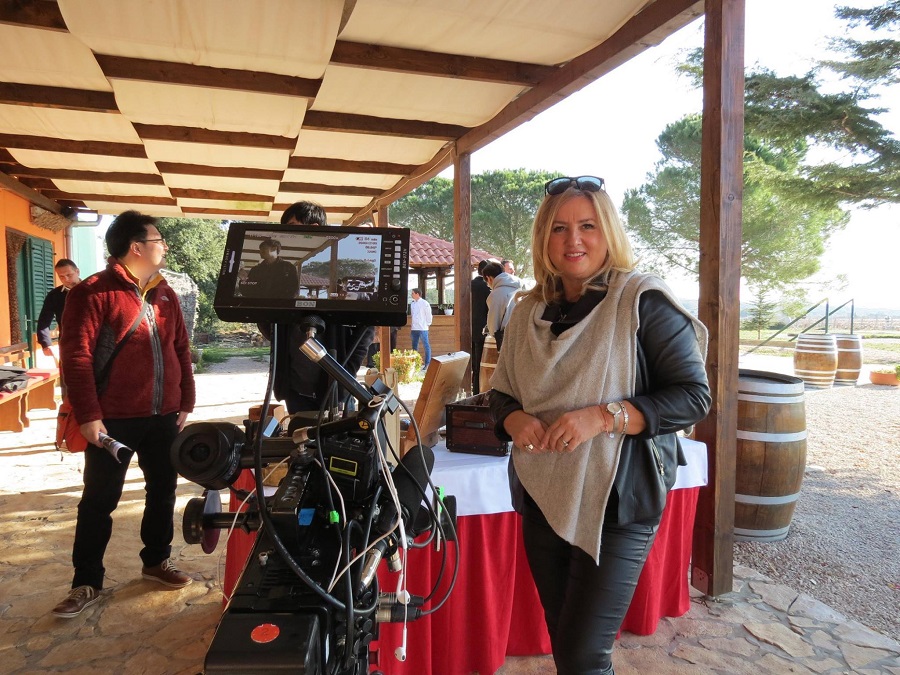
Credit: Spomenka Saraga
According to you, what does a good tourism/travel/promotional film has?
A good promotional film has to show a location in its natural way. The film has to have a target to the which public is intended. While working with a tourist board I always ask them what is their target age of tourists. Are those older people, couples, families, young people and what do you want to show tourists? Sometimes you can cover the whole age group. But it depends if the attraction and location can cover it, like Rijeka.
In our last film about Rijeka, we addressed people from Europe, people from Croatia to visit Rijeka, which is the European Capital of Culture for 2020. In that film, we wanted to address everyone. We wanted them to come for one or more days in Rijeka or simply spend their vacation there. Rijeka is a big town but also has beautiful beaches. They can also find great accommodation and go on excursions outside of Rijeka.
The most important thing about good promotional films is that the clients know what they want. Locations are different in their way. You can't address young people and families with children with the same location. Young people want to go out in clubs, loud music, dance and that is different what families want. Families want peace. The second important thing is the music. A lot of clients told me that music is not important. We choose music to fulfil all the criteria. Even our Croatian authors are now making great music, which follows global trends.
In Rijeka I Miss You, you covered things for young people as well.
Yes, because a town like Rijeka has it all. You have bars, night clubs for young people. Also, there are restaurants, both fast food and restaurants with good food, because it is a big town. The same goes for Split and Zagreb as well, or any other bigger town. Right now city breaks are modern. People come for a couple of days and they come with direct flights. Towns need to have good connections with destinations. It is great when you can come in the morning with your flight and then spent a few days and then catch a night flight. That is very convenient for young people and business people.
What can you tell us about Balduči Film?
I worked in Jadran Film for over 30 years and unfortunately that firm was destroyed like many others in Croatia. Before the Homeland War, Jadran Film was one of the best production companies in Europe. They even called it Little Hollywood. We had studios, laboratories and we did great films, such as Night Watch, Death Train, Sophie's Choice, Fiddler on the Roof and some of these films got an Academy Award.
Because of the combination of these circumstances in the firm, I asked myself what now? I only knew how to work with films, so I decided to open my own production company. I can proudly say that in almost 13 years, my company hasn't had any debt or problems. The company produces tourist films but also offers foreigners which come to shooting in Croatia for reality shows from China, Korea, England, the United States, the Netherlands and more. Thanks to our production connection with Korea, today Croatia has more tourists from Asia. Not so long ago we finished a reality show with a production company from Wales. We finished six episodes for a reality show that we worked in Lošinj, where Lošinj came across as a great destination. It showed great production and we were surprised with great service. On that project, we worked with a production company from the Netherlands. In one day, we shot one episode and we finished in eight days and preparation lasted for five days and it all went perfectly.
We also shot the second season of PTSP: Sexual harassment, the previous one was shot in Norway and the second in Lošinj. It is a great show, female patients came with their therapist, they had everyday therapies and sessions in a beautiful environment, where they enjoyed excellent nature and food which Lošinj offers. We looked through a lot of islands and destinations and Lošinj came out as the best one.
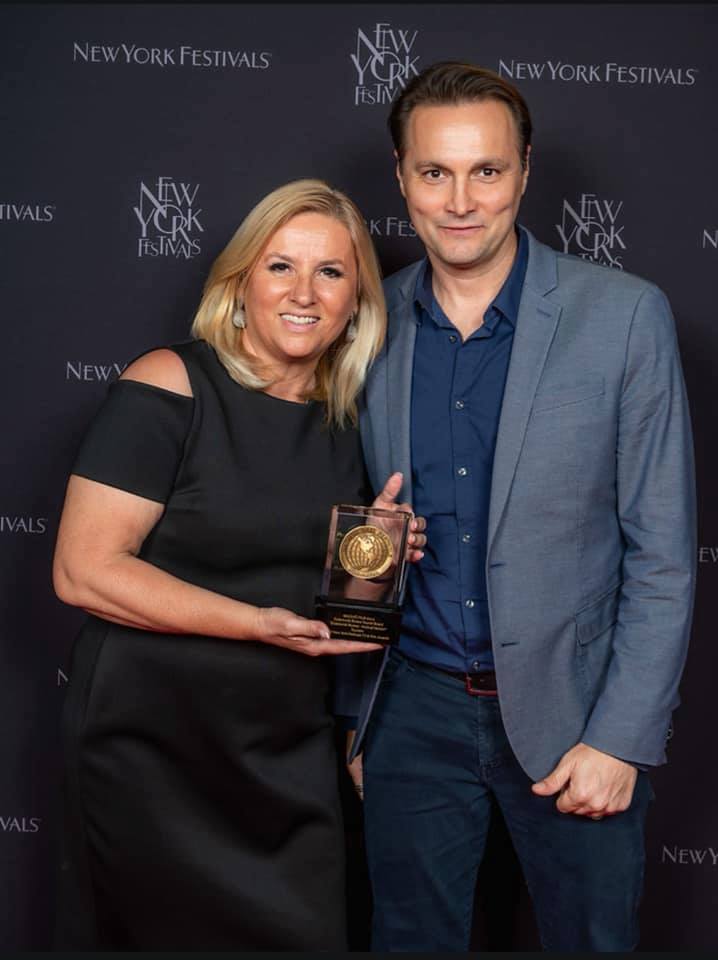
Credit: Spomenka Saraga
What do you think about Croatia as a film location?
That is also one of the segments in which I work. I work as a location scout. The first film that I made about film locations in 2006 was the only film we have ever had. This year we finished a new film about locations in Croatia and I have to thank the Croatian National Tourist Board which gave me the support. We showed the coast and continental part of Croatia. The film sadly didn't cover all the locations, it even lasts longer, like seven minutes. However, it is hard to summarize everything in two minutes and that is exactly how long they had to last. If someone wants to visit locations in Croatia, that film is a great invitation. And it also shows the diversity that Croatia has. The producer needs to have the ability to move on the ground from one location to another and Croatia has that advantage. Croatian advantages are roads. Also, for example, Makarska has mountains which are very close to the sea. Split also has harbour from which you can quickly come to islands.
CROATIA YOUR NEXT FILMING DESTINATION from Balduci Film on Vimeo.
Dubrovnik is so beautiful and whenever you turn your camera you can't go wrong. The problem of shooting in Dubrovnik is that they are too many tourists. To shoot in Dubrovnik, you have to close the town and that is very hard. So you have many night scenes. This year the town has started paying to use the location for films because sometimes damages can happen or pollution, but the team of filmmakers clean it. The citizens of Dubrovnik are proud of the fact that famous productions are made there. That is a great promotion of not just Dubrovnik, but all of Croatia. With this movie about film locations of Dubrovnik, we want to call film producers to visit and use other places in Croatia.
Mamma Mia 2, was shot in Vis, but the first part in Greece. When I was in Greece at a congress where I had a lecture on How a film location can be a tourist attraction. A the end of the lecture, many people admired how Croatia managed to get that. But they were also angry because Vis portrayed a Greek island. In the films, we have a problem that Croatia often doesn't represent itself, but other countries. I agree that towns should play real towns, like when we shot in Rovinj and Šibenik and they played their real towns. That is a good thing for the promotion of films and locations for films are cheaper and sometimes they can be free. But if the town represents the other town, the rent for the location of the town should be paid.
We have a commercial for Heineken in Rovinj with a James Bond then. First, it is showed Rovinj and then you see it is a commercial for a Heineken.
You have produced a lot of films about Dubrovnik over the years
In the last 30 years, I worked with Branko Baureom which came from the production company Jadran Film. The first film that was shot in Dubrovnik after the war, was Dubrovnik Riviera that worked Baldo Čupić. The first film that I worked with my production company is Unique Dubrovnik, after that Dubrovnik and Time. Eleven years ago I made a film whole Dubrovnik Riviera and it is called Magnificent Jewels. That is a film about Dubrovnik county
Last year we made a film Dubrovnik Riviera, which won nine awards. We even won two American awards. One of them is Telly awards and we won third place in the New York Film Festival.
DUBROVNIK RIVIERA - FV from Balduci Film on Vimeo.
For what film it was a great honour to win?
Every movie is a great honour, but when great festivals get to know your work. Visit Lika won a silver award in America, second place in Riga, an award in Portugal. On that film, I worked with director Boby Grubić, who won three Emmys. In order to make a great movie it is important to know what people like, what clients like, and how to reach to them.
VISIT LIKA from Balduci Film on Vimeo.
Dubrovnik is a great love for me, I love Dubrovnik like I was born there. For American filmmakers, I showed them new script and locations which would be good. At first, they weren't interested, because they had their own standard story of Dubrovnik. But overnight they liked my idea and they were excited. They saw a sea egg and Stone walls. It is great that part of the county is preserved and that people look after it.
How does the promotion of Croatia around the world look like?
A lot of people who do not know people from Croatia or have never been there, see Croatia in a bad way. When they see film or hear stories, they think that we are a small, poor country. When I show people tourist films which are different than documentary films and news video, where they saw a situation in Croatia, people are very surprised when they see how great it looks. They say that we are a real European country. A country with a great sea, nature, and they are surprised by our roads. How quickly they can go from one place to another. Of course, they are thrilled with Croatian National Parks, because for example in Plitvice lakes people love nature and waterfalls. Many people come to Croatia and they don't dare to drink our water because they think is polluted. They would rather buy it. But we can be proud because we have clean water. Croatia has a lot of stuff to offer. It is a beautiful country, with nature and fresh air. We should consider the price and quality. It is not a problem to pay if that price satisfies the quality. When you go to other countries, you pay a big price for a meal, but you get a quality one. During the winter we keep our hotels closed, but I think if we give lower prices, we would have tourists then too.
How long does it take to make a tourism film?
The idea of what to shoot takes most of the time. After we decide what do we want to shoot, then things go smoothly. The most important thing is the preparation. When you make a film, it is important to make more plans, because you depend on the weather, so I always have Plan A, B, C. So if Plan A or any other doesn’t work, I always have a backup. It can often happen that we make a film and then we change the concept. For example, in Dubrovnik Riviera, we changed the music, because we thought it would go better than the previous one. We are always careful when we choose the music, we want it to go to the pictures and that the client likes it. If you want to make a low-budget film, the minimum is five days. But if you want to make a quality film, you have to have time for that. The optimum time for that is eight to ten days or more. It depends on the location and the places which you have to visit. When we make it, we pick the best cadre and after that, the editing is done very quickly. It takes about five days, but it depends on the length of the film. Sometimes you have to have colour effects because you don't work under the same conditions. But when you look it from the start, the beginning, organizing, the script, it takes let’s says two months.
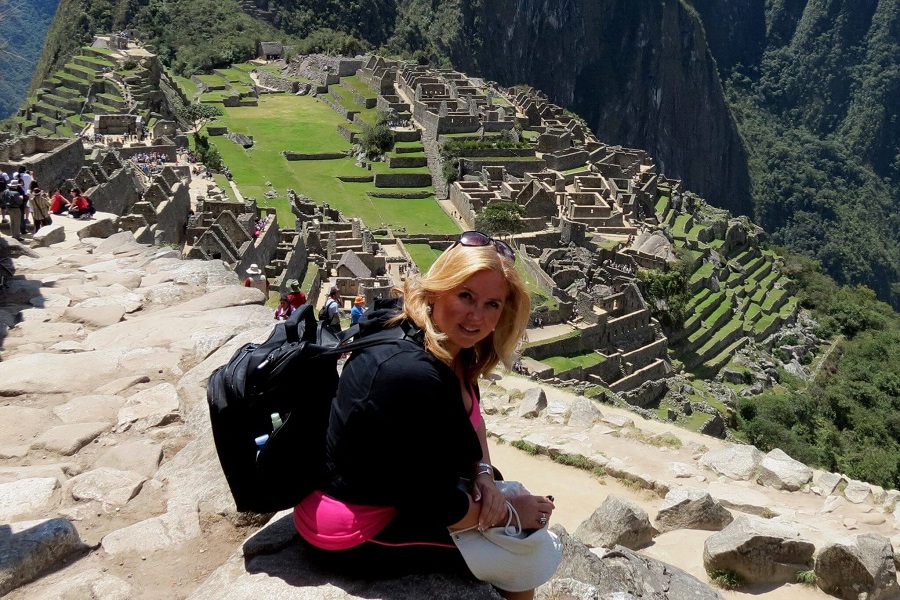
Credit: Spomenka Saraga
What do you think about Croatian film festivals?
Croatia can be proud of its festivals and hospitality. Festivals always offer people to stay, food, they make great organization and welcome them. From day one, we want to make their stay very beautiful. Some people are shy and we make sure to connect them to other people, so they don't feel bored or left out. We always want to feed our guests well and many guests from other countries are very surprised when they find out that food on such events is free. In other countries, if you want to eat something, you have to pay for it.
In the Sarajevo film festival, they work hard to satisfy their guests and that is the reason why it is one of the best festivals in Europe. In a short time, it became a great festival like one in Cannes and Venice.
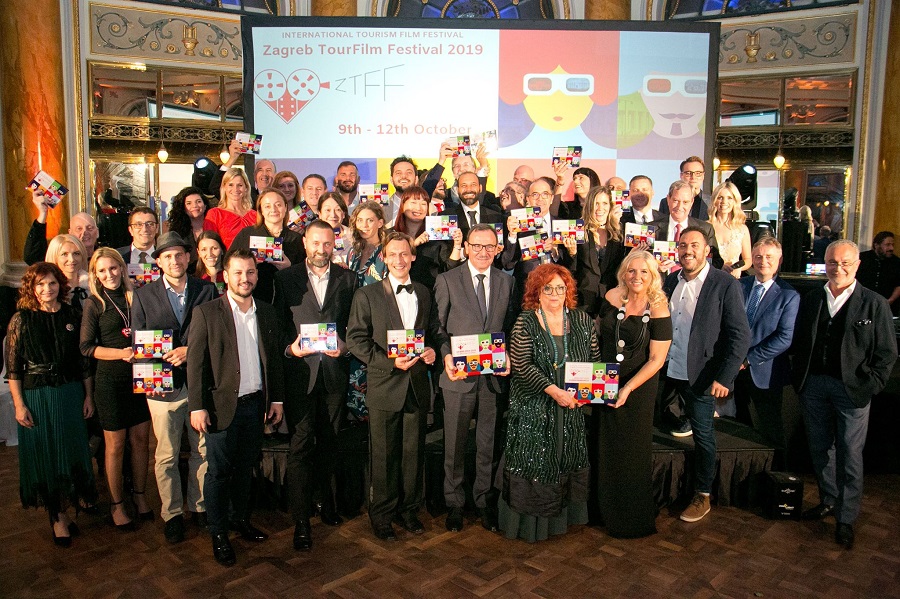
Credit: Spomenka Saraga
Tell us a little about Zagreb TourFilm festival?
Organizing such an event is not that simple. We owe a debt of thanks to Amelia Tomašević, the previous director of the Zagreb Tourist Board, who saw potential in the promotion of tourism through such festivals. In a way, she was a co-organizer. Later we continued working with Martina Bienenfeld, the current director of the Zagreb Tourist Board, which supported the festival because it is a mutual festival between Zagreb Tourist Board and Balduči film with other sponsors as well. My experience at other festivals allowed me to see what is good and bad. In the first year, we set the bar very high, so later it was really hard to surpass that. With the help of Luka Benko, from Zagreb Tourist Board and Niko Bulić, the previous director of Croatian National Tourist Board, we made a great festival. Every guest praises the festival, as it can be seen in the reaction of the quests, which come for the first time, or they have been here. Also, ambassadors in Croatia show satisfaction about the festival. They are amazed how their country gets promotion through the festival, they are happy that their film was shown to the Croatian people.
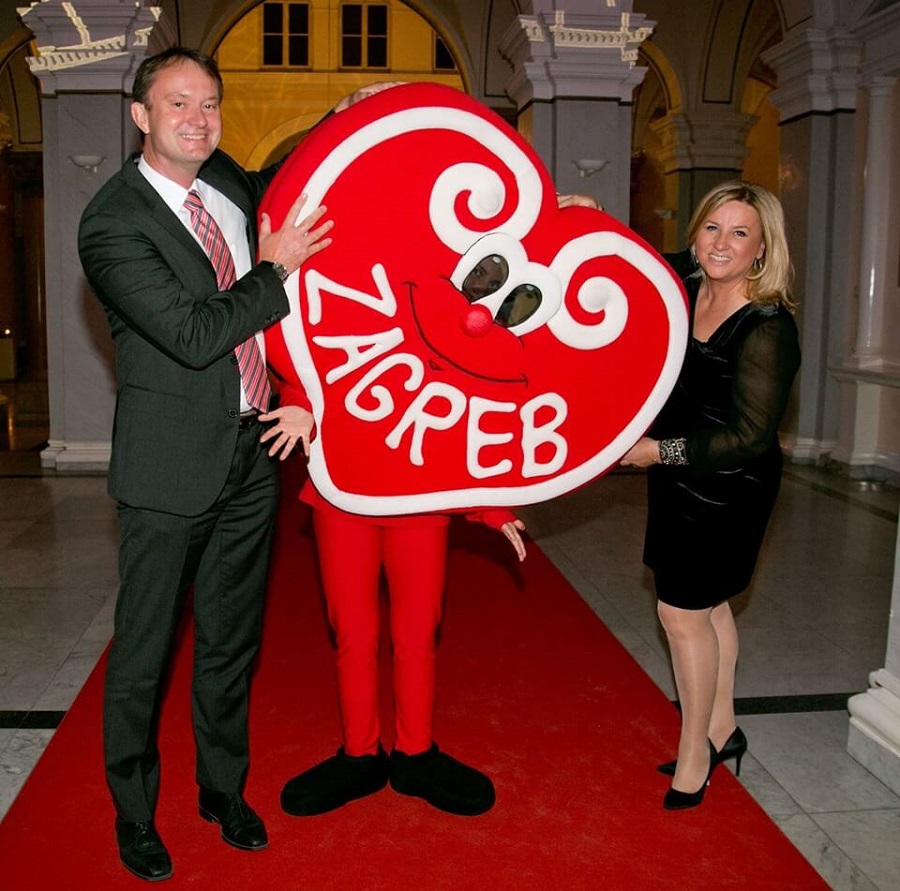
Credit by: Spoemnka Saraga
The benefit from these festivals is that journalists in countries that won the award are writing about it. We have a lot of articles abroad, for example in Japan. We recently got information that fifty portals have written about a film and their director who won an award in Zagreb. So that is the promotion of the town and country abroad. Sometimes people come to the festivals for three days, but they often extend their stay for a week or even more.
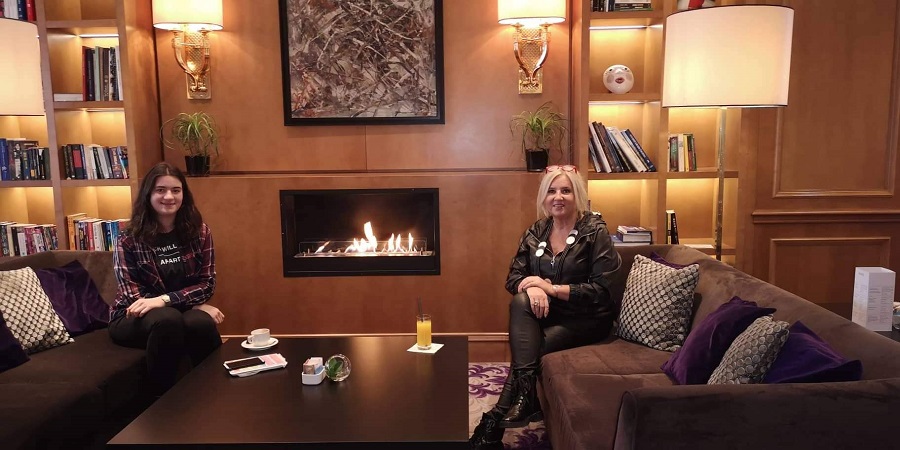
CAUTHE 2020 Conference: Istria Presented in Auckland, New Zealand
Croatia is full of tradition and the Istrian peninsula is no different. Full of festivals and carnivals which have their roots deep in the Istrian psyche, it's difficult to spend any time in this truly gorgeous part of Croatia without seeing a performance of some kind, particularly in one of the more populous cities, such as Pula or Porec. The traditions of Istria have made it to the other side of the world, more precisely to the CAUTHE 2020 Conference.
As Glas Istre writes on the 17th of February, 2020, the CAUTHE 2020 Conference (The Council for Australasian Tourism and Hospitality Education Conference) is held in Auckland, New Zealand, and one of the topics was the presentation of ''Istra Inspirit'' from Istria as an example of good practice as part of the topic "Achieving Competitiveness - How we became one of the world's best stories."
In addition, a handbook linking the community and culture to storytelling, created at the end of 2019 in cooperation with the Ministry of Tourism and the Istrian Development Tourist Agency, was also presented on the other side of the world, far from Europe.
The presentation was delivered by doc. dr. sc. Morena Paulišić from the University of Juraj Dobrila in Pula and an external associate in the course, Manuela Hrvatin. The topic of the CAUTHE 2020 conference was about new perspectives on the diversity of hospitality, tourism and events, introducing new trends, ways of educating the academic sector with the aim of achieving competitiveness on the tourism market, educating young people and applying sustainable tourism.
It strives for the highest quality training and inclusion of young people in the community, with the creation of unique experiences, which creates additional sustainable value of tourist products in the destination.
Istra Inspirit stands out as one of the best examples of the valorisation of cultural heritage, the revival of history, tradition, myths and legends and the networking of a range of stakeholders within the destination.
Make sure to follow our dedicated travel page for much more.

